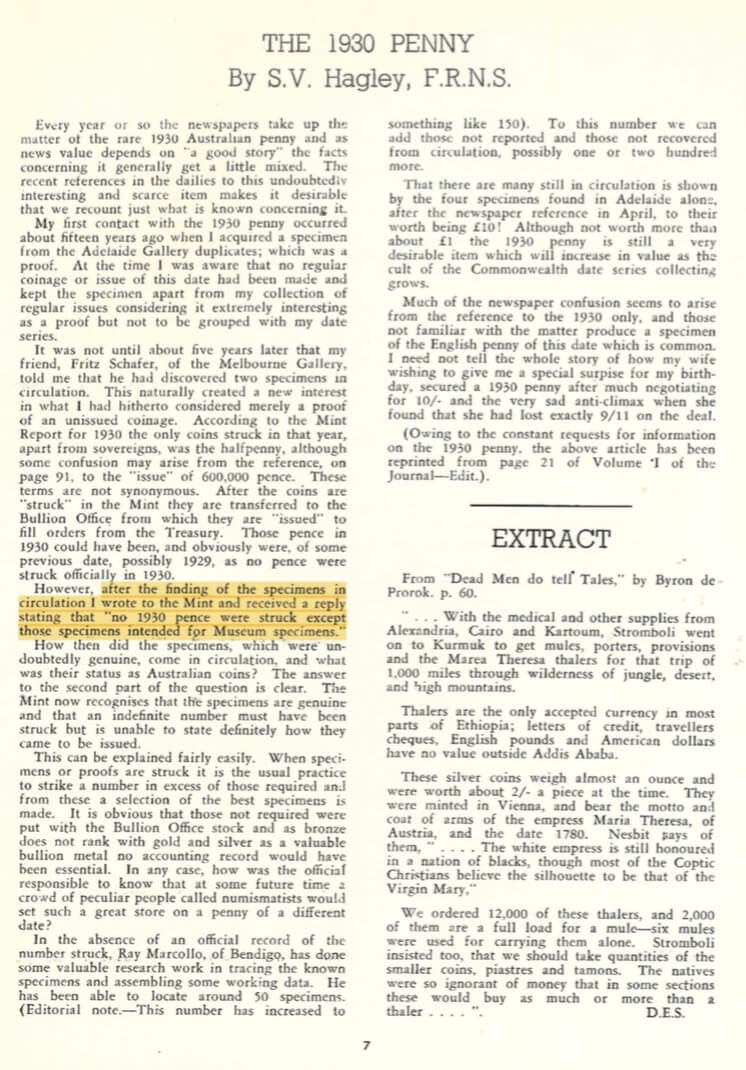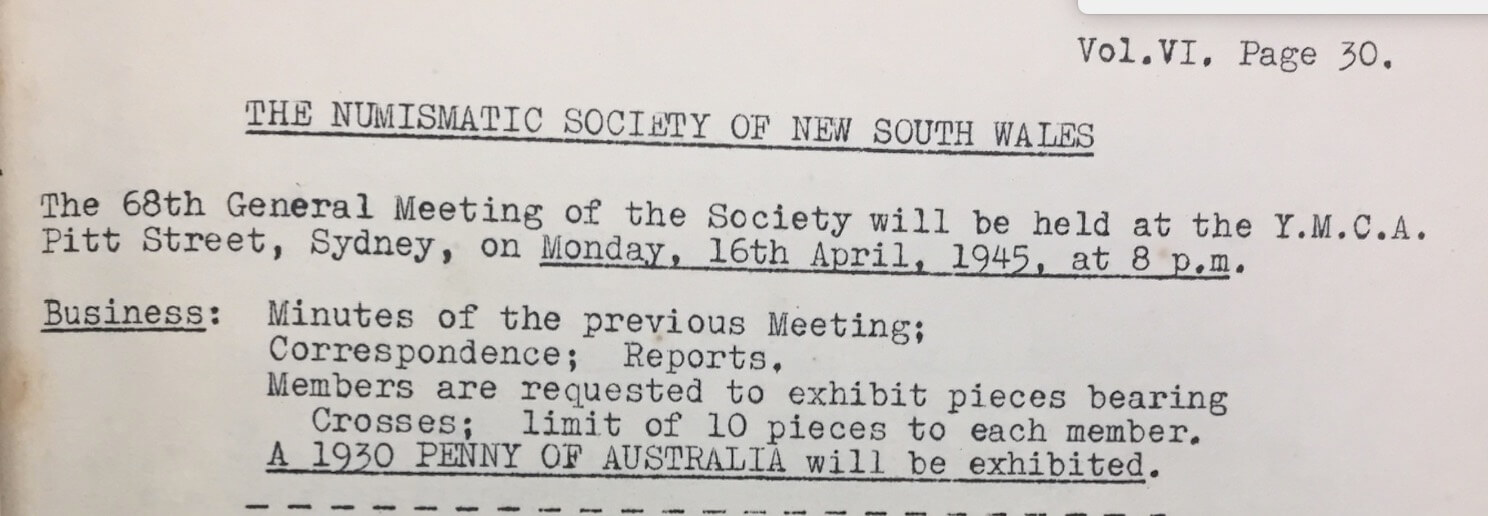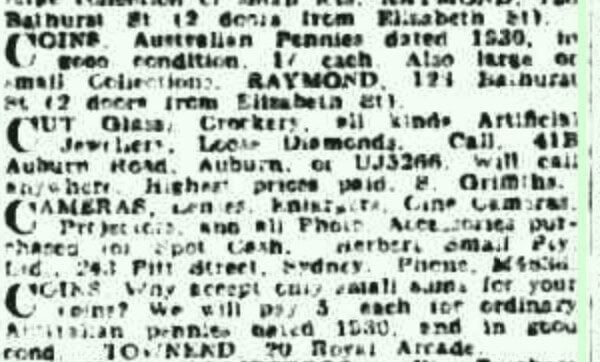Australia's 1930 Penny - Why Is It Our Nation's Most Popular Rare Coin?
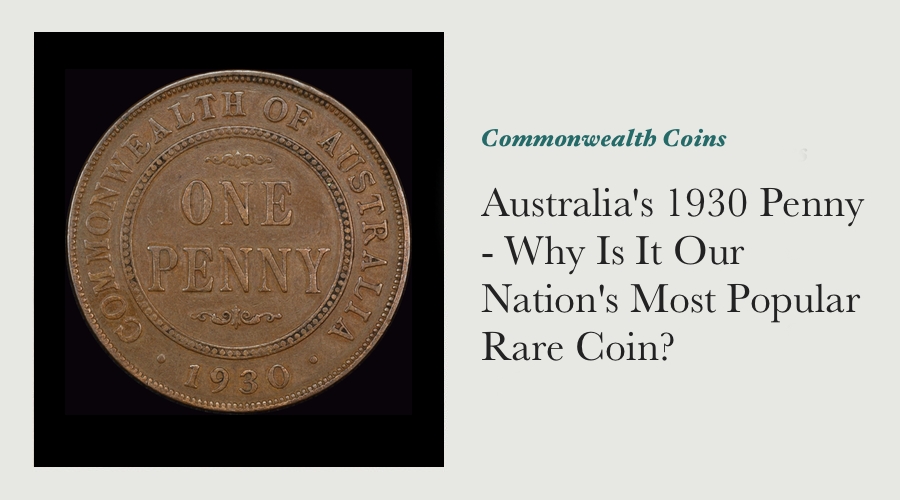
We've seen numerous articles published over the years that have explored the reasons why Australia’s 1930 penny is rare, as well as the circumstances behind their manufacture.
Much less has been written about the demand for our nation’s most compelling coin - I’ve met many non-collectors, as well as collectors from outside Australia who can’t fathom just how this dull copper coin can be Australia’s most popular and well-known numismatic rarity.
Most people believe that the 1930 penny first boomed in popularity during the heady days of the 1960s, as Australia switched to decimal currency and we were a nation of coin collectors. The truth is that the standing of the 1930 penny was set in stone two decades earlier, during the closing months of the Second World War.
For this project, I collated every printed reference I could locate on the 1930 penny into one location and built a timetable of the events that occurred. The results show why this coin remains highly prized nearly a century after it was struck.
First Discovered - In the Early 1940s by Fritz Schafer
The earliest printed reference to someone finding the 1930 penny out of circulation I’ve been able to locate is in an article by the South Australian numismatist for the South Australian Numismatic Journal in 1950.
In that article, Hagley stated that he obtained “…a specimen from the Adelaide Gallery Duplicates[1]” about “fifteen years” earlier, which would date that transaction to around 1935.
In his history of the Art Gallery of South Australia (AGSA), Peter Lane instead records that Hagley acquired his specimen 1930 penny from the AGSA in March 1941[2].
While Hagley can be forgiven for not remembering the exact date he acquired his coin, the reason his recollection is mentioned here is that in the same article he went on to say that it was not until “…about five years later that my friend, Fritz Schafer, of the Melbourne Gallery, told me that he had discovered two specimens in circulation.[3]”
Schafer was the Curator of the Victorian state numismatic collection at the time and was an active member of the Victorian Numismatic Society (VNS).[4] Until we can locate an earlier verifiable reference, Schafer currently has the honour of being the first collector to find a 1930 penny out of circulation.
I would have expected Schafer to have mentioned his discovery at a numismatic meeting, written confirmation of his momentous find has not yet been discovered.
If we move forward 5 years from Hagley’s actual acquisition date, that would make 1946 as the first year in which a 1930 penny was discovered in circulation. This timeline doesn’t reconcile with other printed references to the 1930 penny, which means Hagley’s recollection is most certainly incorrect.
Clarification from Heyde and Fleming
In his memoirs, the Sydney numismatist Gilbert Heyde wrote “About 1942 Sydney Hagley told me there was an Australian 1930 penny, and he had been shown one. The Mint said that none had been made or issued that year. Hagley said that, despite the statement by the Mint, the coin was clearly a Mint product. The matter was mentioned at a society meeting, and everybody started searching through their pennies[5].”
A further source of information on the early years of the market for the 1930 penny is Owen Fleming, another Sydney numismatist who was active from the 1920’s right throughout World War II. In 1985, Fleming wrote an article for the Australian Coin Review (ACR) magazine on the 1930 penny and opened it by stating “It was not until 1944 that a 1930 Australian penny was found in circulation. It had turned up in Victoria. We’d known for a long time that the ’30 penny existed, but only as a specimen piece issued by the mint. One was held by Syd Hagley. When it was found that the 1930 penny was in circulation, the hunt was on.”[6]
Once he knew of the existence of the 1930 penny, Fleming began to search the coins that were available to him as a teller with the Commonwealth Bank. Fleming was not satisfied with his progress, so he “…sought the aid of the newsboys around Granville railway station, and the offer of two shillings each for any found was touted[7].”
Fleming was successful in purchasing one on March 14th 1945[8], and in his capacity as the Secretary of the Numismatic Society of New South Wales (NS NSW), he announced that the agenda for their meeting on April 16th 1945 that “A 1930 PENNY OF AUSTRALIA will be exhibited[9]”. That announcement was made in the minutes for the Society’s meeting dated March 19th 1945[10], and is the earliest printed reference to the 1930 penny that has been located to date.
If we take each of the recollections mentioned above into account, it seems that Fritz Schafer has the honour of being the first collector to obtain a 1930 penny out of circulation and that he made his discovery at some stage between 1940 and 1944.
First Public Exhibition by Owen Fleming on April 16th 1945
The last exhibit described in the NSNSW minutes for the meeting held on Monday, April 16th 1945 noted that Owen Fleming exhibited an “Australian Commonwealth penny 1930[11]”.
This looks to have been the first time an Australian 1930 penny was exhibited anywhere in the country. In hindsight, this was a truly formative event that caused the 1930 penny to be chased by collectors across the nation for decades to come.
A Bidding War Begins Between Raymond and Townend
The reason Fleming’s exhibition at the meeting of the Numismatic Society of NSW can be credited with starting the roaring demand for the 1930 penny is that the Sydney Morning Herald (SMH) newspaper printed on the first Saturday that followed it (April 21st) contained an advertisement by the rare coin dealer Dave Raymond, on page 18 of the “Wanted to Buy” section:
“COINS. Pennies dated 1930, in good condition, 1/- each. Also large or small collections. RAYMOND. 128 Bathurst Street. (2 doors from Elizabeth St)”[12]
That advertisement was repeated in the same newspaper on Wednesday 25th April, and also on Saturday 28th April. Another advertisement could be seen a few more centimetres down the same page of the April 28th edition, it read:
“COINS. Why accept small sums for your coins? We will pay 5/- each for ordinary Australian pennies dated 1930, and in good cond. TOWNEND 20 Royal Arcade.”[13]
The business that lodged this provocative advertisement was AW Townend, a stamp dealer based in Sydney’s CBD.
Opinion on Gilbert Heyde Was 50/50 - Fellow Collectors Thought He Was Either Half Crazy or Completely Crazy
In his memoirs, the well-known Sydney collector Gilbert Heyde described the opening days in the market for Australia’s 1930 penny: “At that time I was assisting Townend, a stamp dealer, to take on coin dealing also. I promised Townend that I would take all specimens off his hands…”[14]
Townend’s provocative advertisement clearly had the intended effect, because next Wednesday’s edition of the SMH contained the following advertisement by Dave Raymond in the Wanted to Buy section:
“COINS. Australian pennies dated 1930 in good condition, 10/- each. Also large or small collections. RAYMOND 128 Bathurst Street. 2 doors from Elizabeth St.)”[15]
Raymond repeated his advertisement on the next 2 Wednesdays, as well as for the next 4 Saturdays. Townend’s advertisement was not repeated, and Raymond kept his offer of ten shillings per coin public until Saturday, May 26th. Although Raymond was pleased when his advertisement was successful, he apparently got something of a shock when a second 1930 penny was offered to him promptly after that.
Gilbert Heyde also speaks of this episode in his memoirs: “Raymond got cold feet and sent the prospective seller away saying something like “thank you very much for bringing the piece in, but I’ve bought one already”, showing the specimen he had, “and I don’t need another one yet.” This news quickly got around the coin collecting fraternity, and as soon as I heard, I went to see him. We had a very long talk…”
“The Arrangement: We agreed that it would seem to be a pity to try to kill the story in the papers of “a pound for a (particular) penny because it was good publicity for coin collecting. It would also help to really dig out specimens. And also it was good publicity for Dave Raymond. Until it emerged just how rare the pieces were, something like seven or eight shillings would have been a much safer price, but there was nothing that we could do about that any more. I gave Raymond one pound for the 1930 penny that he had, and agreed that I would take all further specimens off his hands until further notice. He was, or course, entirely free to sell them to others. But no one else wanted to buy even one at that price[16].”
Although the figures Heyde recalled don’t correspond exactly with those we see printed in the Sydney Morning Herald, we can forgive him as he was working from memory some sixty years after the event. Heyde goes on to state in his memoirs that “In our society, it was no secret I was backing Raymond, and in general terms, most society members were divided between those who thought my action was half crazy, and those who thought it completely crazy.”
Whatever the opinions of Heyde’s fellow collectors were, that bidding war conducted via the Sydney Morning Herald over the space of 3 weeks in 1945 sewed the seeds of demand for Australia’s most popular coin for decades to come.
Heyde accumulated 38 examples by the time his agreement with Raymond came to an end, he sold them many years later for more than £100 each. Like many of the collectors that have outlaid good money on a 1930 penny in the years since Heyde’s actions can be better seen as bold and enterprising rather than crazy.
The Poster Child for the Coin Boom of the Decimal Era
The frequency of printed references to the 1930 penny in Australia’s numismatic literature is quite limited in the two decades that following 1945.
We next see the 1930 penny on the front cover of the Australian Coin Review magazine, launched in July 1964.
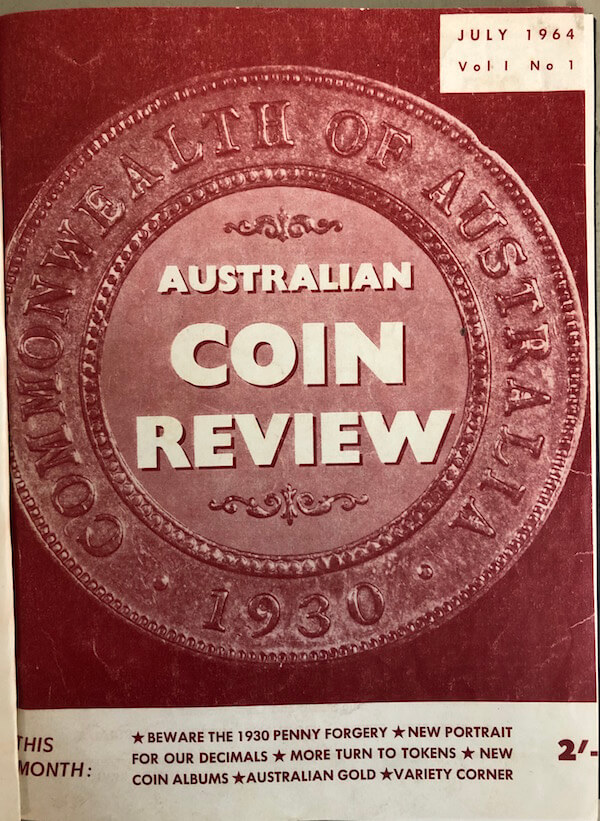
These were boom years for coin collecting in Australia, and the coin is then regularly mentioned in a range of articles, advertisements and auction listings throughout the pages of that magazine in the years that followed.
Auction results ranged from £65 ~ £130 in 1964, while several coins were advertised for around $500 just a few short years after that.
The history of the 1930 penny appeals so much to generations of collectors that articles explaining or speculating on its history have appeared in print regularly since then.
We can see from the published literature on this coin over the years that it has a perfect mix of rarity, mystery and enterprise. It has grabbed the imagination of generations of Australian collectors and has been regarded as a prize for more than 3/4 of a century.
Our Other Articles About the 1930 Penny:
We've written several other articles that cover different aspects of the 1930 penny:
One of the very first questions that a new collector of Australian pre-decimal coins asks is: "Why is the 1930 penny Australia's most well-known rare coin?" Click this link to read our article that provides a good overview of Australia's most well-known rare coin.
One of the great mysteries that puzzles the average Australian coin collector is: "Why Is The 1930 penny So Rare?"Click this link to read our article that explains why so few of them were made during the darkest days of the Great Depression.
Many collectors know that a quick way of determining whether a 1930 penny is genuine or not is to check the obverse (heads side) and see if it is the English or London obverse type. The trouble is, there are 3 genuine 1930 pennies with the English obverse known to exist. Click this link to read our article and learn why this incredibly rare variety was struck, and how to identify them.
-
Hagley; Syd, “The 1930 Penny” in the South Australian Numismatic Journal, Volume 1, 1950, p 21. ↩
-
Lane; Peter, “The Coin Cabinet”, Art Gallery of South Australia, Adelaide, 2017, p 132. ↩
-
Hagley; Syd, “The 1930 Penny” in the South Australian Numismatic Journal, Volume 1, 1950, p 21. ↩
-
https://trove.nla.gov.au/newspaper/article/1685491 ↩
-
Heyde; Gilbert, “Letter to Oscar”, Victor Von Der Heyde, Holland Park, 2005, p 305. ↩
-
Fleming, Owen, Recollections of the 1930 penny. Australian Coin Review, Vol. 22 No. 3 September 1985, pp. 14–19. ↩
-
Fleming, Owen, Recollections of the 1930 penny. Australian Coin Review, Vol. 22 No. 3 September 1985, pp. 14–19. ↩
-
Fleming, Owen, Recollections of the 1930 penny. Australian Coin Review, Vol. 22 No. 3 September 1985, pp. 14–19. ↩
-
Numismatic Society of New South Wales Report, March 19th 1945, page 30 ↩
-
Numismatic Society of New South Wales Report, March 19th 1945, page 30 ↩
-
Numismatic Society of New South Wales Report, April 16th 1945, page 35 ↩
-
https://trove.nla.gov.au/newspaper/article/17942136/991981 ↩
-
https://trove.nla.gov.au/newspaper/page/992071 ↩
-
Heyde; Gilbert, “Letter to Oscar”, Victor Von Der Heyde, Holland Park, 2005, p 305. ↩
-
https://trove.nla.gov.au/newspaper/page/992115 ↩
-
Heyde; Gilbert, “Letter to Oscar”, Victor Von Der Heyde, Holland Park, 2005, p 305. ↩
Comments (1)
1930 THE MYSTERY DEEPENS
By: laurence burns on 25 April 2020ENJOYED THE ARTICLE ON THE 1930 PENNY VERY MUCH. THE RESERCH AND DISCOVERY WORK IS APPRECIATED ADDING TO A WONDERFULL PART OF OUR HISTORY. AT A TIME WHEN MODERN COINS MAY DRIVE THE MARKET IT IS IN HISTORY THAT I MAINTAIN MY INTEREST AND SEEK TO SHARE THE STORIES THAT ACCOMPANY THESE TREASURES FROM THE PAST.
